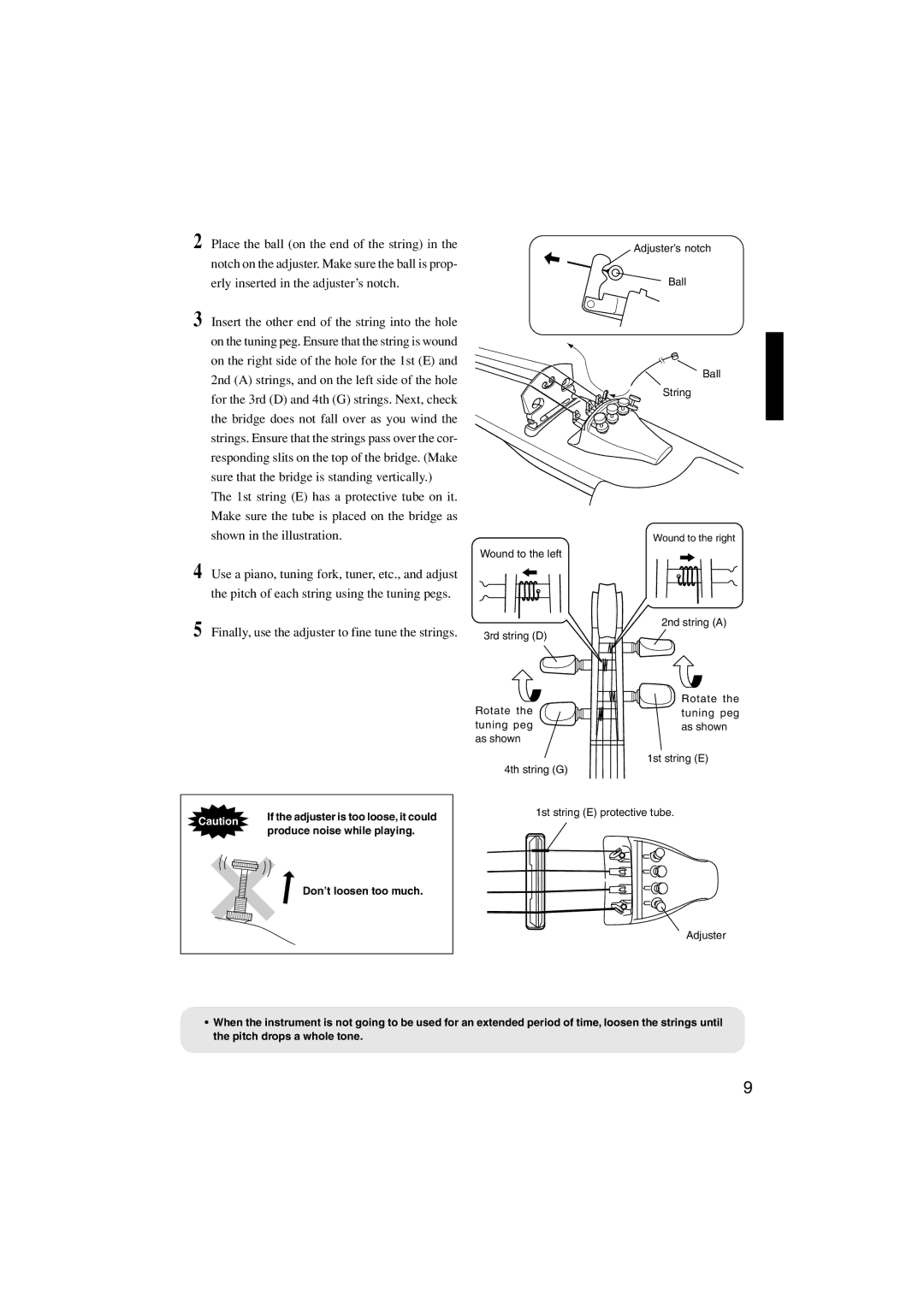SV130, SV130S specifications
The Yamaha SV130S and SV130 are standout models in Yamaha's lineup of silent violins, designed for both amateur and professional musicians seeking versatility, convenience, and superior sound quality. These models embody Yamaha's commitment to innovation and performance, making them excellent choices for those wishing to practice silently without sacrificing tonal richness.One of the primary features of the SV130S and SV130 is their composite body construction, which provides durability while ensuring a resonant tonal quality. This innovative design allows for a rich and full sound that rivals traditional wooden violins. In addition, the models are equipped with a built-in pickup system that amplifies sound effectively, enabling players to connect to amplifiers or PA systems seamlessly. This makes the SV130S and SV130 ideal for performances as well as practice sessions.
The playability of the SV130S and SV130 is enhanced by their ergonomic design. The instruments feature a real wooden fingerboard and bridge, which contribute to a more authentic playing experience. Whether a musician is bowing or plucking, the tactile response is impressive, ensuring that both beginners and seasoned players can enjoy a comfortable and engaging experience.
Technology is a significant aspect of the SV130S and SV130. They are fitted with Yamaha's advanced SRT (Studio Response Technology) that delivers an exceptional sound quality. This technology simulates the warmth and resonance of an acoustic instrument, making even the most subtle nuances of a player's technique come to life. Additionally, the onboard control knobs allow players to adjust volume and tone easily, offering flexibility depending on the performance setting or practice environment.
The instruments’ lightweight design is another hallmark feature, providing ease of transportation and handling. Musicians can easily take their SV130S or SV130 to rehearsals, performances, or practice sessions without the burden often associated with traditional violins.
In terms of aesthetics, the SV130S features a sleek finish that enhances its visual appeal, while both models come in various colors to suit individual preferences.
Overall, Yamaha's SV130S and SV130 represent a fusion of traditional craftsmanship and modern technology, making them exemplary options for any violinist looking to expand their musical journey. Their combination of performance, playability, and innovative features places them at the forefront of the silent violin market.

